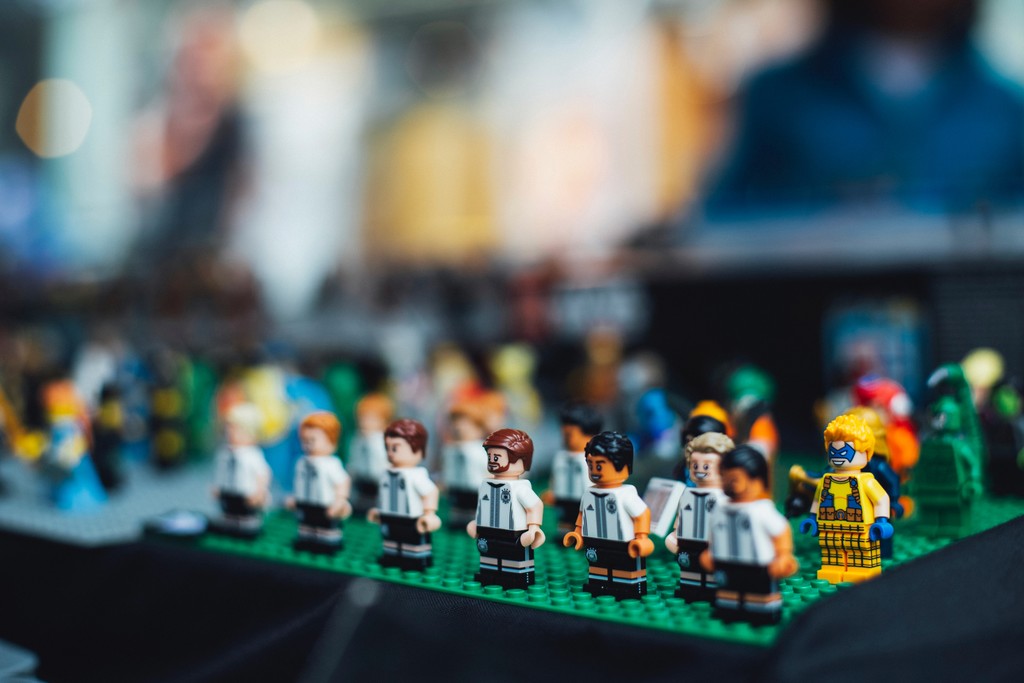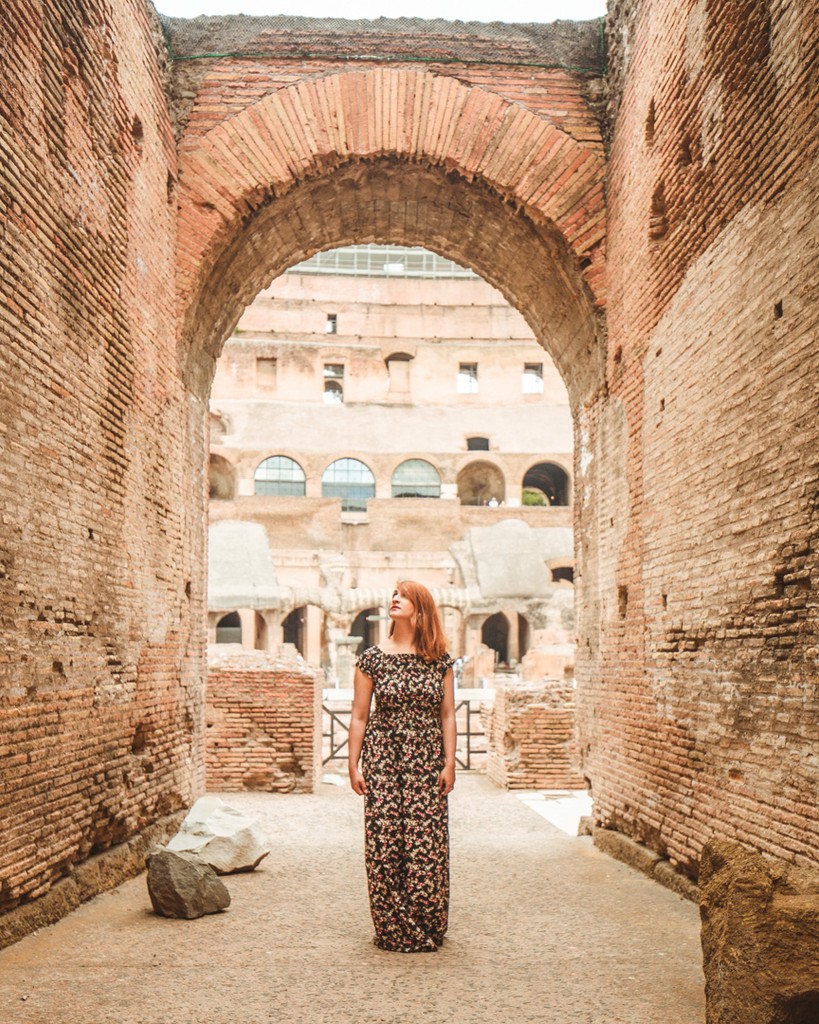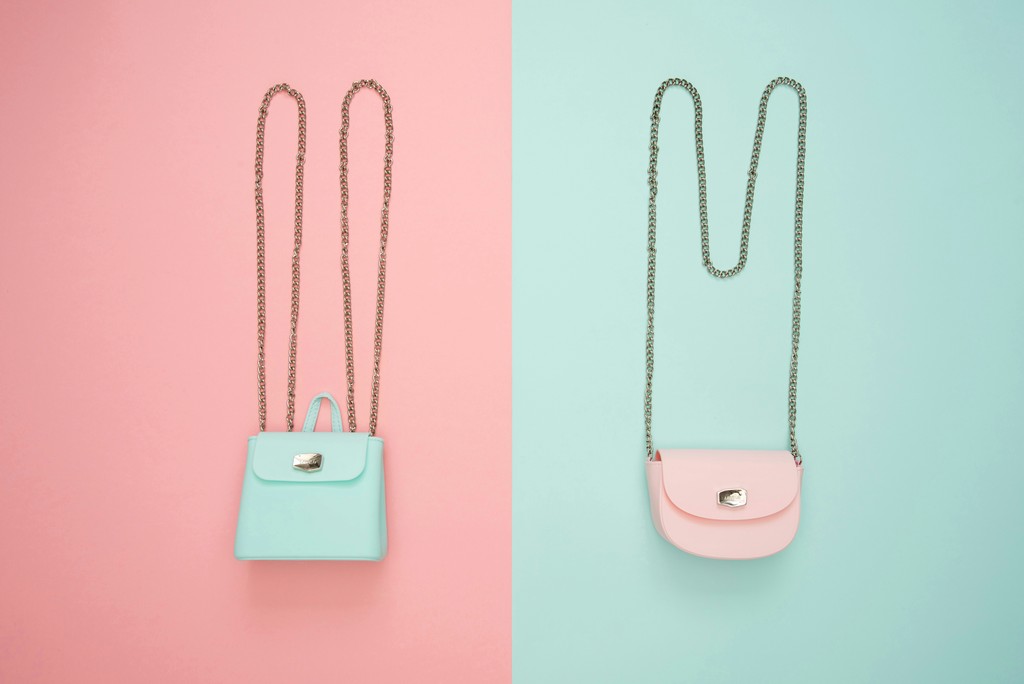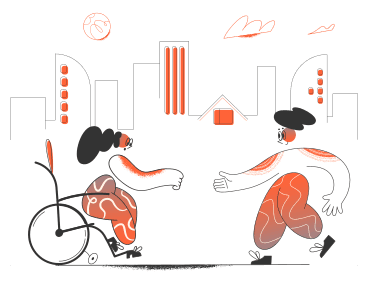menu
empathy in design: bridging the gap from fashion to user experience
empathy in design: bridging the gap from fashion to user experience
empathy in design: bridging the gap from fashion to user experience
empathy in design: bridging the gap from fashion to user experience




In the realm of design, empathy serves as the secret ingredient that elevates good designs to greatness. It's the capacity to empathize with users, to grasp their needs, frustrations, and aspirations, and then to create solutions that deeply resonate with them. Transitioning from fashion design to user experience (UX) design, I've discovered that empathy is pivotal in both domains, acting as a vital link between aesthetics and functionality.
When recruiters inquire about my years of experience in UX design, there's no straightforward answer. I've been immersed in user experience design since 2009, donning various hats under different titles. However, regardless of the label, the fundamental principles of design have always defined my profession. From fashion designer to fashion business entrepreneur and eventually certified UX designer, my journey has been enlightening, unveiling unexpected parallels between the two fields.
In fashion, designers must empathize with their audience to craft clothing that not only looks appealing but also feels comfortable and suits their lifestyle. Similarly, in UX design, the focus shifts from fabrics and stitches to pixels and interactions, yet the core principle remains unchanged: placing the user at the heart of the design process.
One of the key lessons I've learned from my background in fashion is the importance of understanding diverse perspectives. Fashion design taught me to appreciate the uniqueness of every individual and tailor my designs to accommodate different body types, preferences, and cultural backgrounds. This mindset has seamlessly translated into my work as a UX designer, where I strive to create inclusive and accessible experiences for users from all walks of life.
During my second semester at fashion school, I delved into modules like "Communication Design," "material and model," and "shaping." These courses centered around the principles of usability and user experience, emphasizing how design and form serve functions and communicate with users through every detail.
As I transitioned into a UX UI Bootcamp, I found myself reflecting on my early days of designing signs for public spaces back in design school. It was a powerful reminder of how ingrained design principles and usability have been in my education from the start.
Empathy also plays a pivotal role in problem-solving. In fashion, designers are constantly solving challenges related to fit, form, and function, seeking solutions that not only look good but also address the practical needs of the wearer. Similarly, in UX design, empathy empowers us to identify pain points and friction in the user journey, leading to intuitive and user-friendly interfaces that delight users.
Moreover, empathy fosters collaboration and communication within multidisciplinary teams. In both fashion and UX design, success is often the result of seamless collaboration between designers, developers, marketers, and stakeholders. By empathizing with each other's perspectives and priorities, we can align our efforts towards a common goal and create cohesive and harmonious designs.
As I continue to navigate the exciting world of UX design, I'm reminded of the enduring influence of empathy in shaping memorable and impactful experiences. Whether I'm designing a mobile app, a website, or a digital product, I always strive to infuse my designs with empathy, understanding, and a genuine desire to make a positive difference in the lives of users.
In conclusion, empathy in design is not just a buzzword; it's a guiding principle that transcends disciplines and fosters meaningful connections between designers and users. By bridging the gap from fashion to user experience, empathy empowers us to create designs that are not only visually appealing but also deeply resonant and user-centric. So let's continue to design with empathy, compassion, and a relentless commitment to making the world a better place—one pixel at a time.
date published
Oct 15, 2023
reading time
5 min
In the realm of design, empathy serves as the secret ingredient that elevates good designs to greatness. It's the capacity to empathize with users, to grasp their needs, frustrations, and aspirations, and then to create solutions that deeply resonate with them. Transitioning from fashion design to user experience (UX) design, I've discovered that empathy is pivotal in both domains, acting as a vital link between aesthetics and functionality.
When recruiters inquire about my years of experience in UX design, there's no straightforward answer. I've been immersed in user experience design since 2009, donning various hats under different titles. However, regardless of the label, the fundamental principles of design have always defined my profession. From fashion designer to fashion business entrepreneur and eventually certified UX designer, my journey has been enlightening, unveiling unexpected parallels between the two fields.
In fashion, designers must empathize with their audience to craft clothing that not only looks appealing but also feels comfortable and suits their lifestyle. Similarly, in UX design, the focus shifts from fabrics and stitches to pixels and interactions, yet the core principle remains unchanged: placing the user at the heart of the design process.
One of the key lessons I've learned from my background in fashion is the importance of understanding diverse perspectives. Fashion design taught me to appreciate the uniqueness of every individual and tailor my designs to accommodate different body types, preferences, and cultural backgrounds. This mindset has seamlessly translated into my work as a UX designer, where I strive to create inclusive and accessible experiences for users from all walks of life.
During my second semester at fashion school, I delved into modules like "Communication Design," "material and model," and "shaping." These courses centered around the principles of usability and user experience, emphasizing how design and form serve functions and communicate with users through every detail.
As I transitioned into a UX UI Bootcamp, I found myself reflecting on my early days of designing signs for public spaces back in design school. It was a powerful reminder of how ingrained design principles and usability have been in my education from the start.
Empathy also plays a pivotal role in problem-solving. In fashion, designers are constantly solving challenges related to fit, form, and function, seeking solutions that not only look good but also address the practical needs of the wearer. Similarly, in UX design, empathy empowers us to identify pain points and friction in the user journey, leading to intuitive and user-friendly interfaces that delight users.
Moreover, empathy fosters collaboration and communication within multidisciplinary teams. In both fashion and UX design, success is often the result of seamless collaboration between designers, developers, marketers, and stakeholders. By empathizing with each other's perspectives and priorities, we can align our efforts towards a common goal and create cohesive and harmonious designs.
As I continue to navigate the exciting world of UX design, I'm reminded of the enduring influence of empathy in shaping memorable and impactful experiences. Whether I'm designing a mobile app, a website, or a digital product, I always strive to infuse my designs with empathy, understanding, and a genuine desire to make a positive difference in the lives of users.
In conclusion, empathy in design is not just a buzzword; it's a guiding principle that transcends disciplines and fosters meaningful connections between designers and users. By bridging the gap from fashion to user experience, empathy empowers us to create designs that are not only visually appealing but also deeply resonant and user-centric. So let's continue to design with empathy, compassion, and a relentless commitment to making the world a better place—one pixel at a time.
date published
Oct 15, 2023
reading time
5 min
In the realm of design, empathy serves as the secret ingredient that elevates good designs to greatness. It's the capacity to empathize with users, to grasp their needs, frustrations, and aspirations, and then to create solutions that deeply resonate with them. Transitioning from fashion design to user experience (UX) design, I've discovered that empathy is pivotal in both domains, acting as a vital link between aesthetics and functionality.
When recruiters inquire about my years of experience in UX design, there's no straightforward answer. I've been immersed in user experience design since 2009, donning various hats under different titles. However, regardless of the label, the fundamental principles of design have always defined my profession. From fashion designer to fashion business entrepreneur and eventually certified UX designer, my journey has been enlightening, unveiling unexpected parallels between the two fields.
In fashion, designers must empathize with their audience to craft clothing that not only looks appealing but also feels comfortable and suits their lifestyle. Similarly, in UX design, the focus shifts from fabrics and stitches to pixels and interactions, yet the core principle remains unchanged: placing the user at the heart of the design process.
One of the key lessons I've learned from my background in fashion is the importance of understanding diverse perspectives. Fashion design taught me to appreciate the uniqueness of every individual and tailor my designs to accommodate different body types, preferences, and cultural backgrounds. This mindset has seamlessly translated into my work as a UX designer, where I strive to create inclusive and accessible experiences for users from all walks of life.
During my second semester at fashion school, I delved into modules like "Communication Design," "material and model," and "shaping." These courses centered around the principles of usability and user experience, emphasizing how design and form serve functions and communicate with users through every detail.
As I transitioned into a UX UI Bootcamp, I found myself reflecting on my early days of designing signs for public spaces back in design school. It was a powerful reminder of how ingrained design principles and usability have been in my education from the start.
Empathy also plays a pivotal role in problem-solving. In fashion, designers are constantly solving challenges related to fit, form, and function, seeking solutions that not only look good but also address the practical needs of the wearer. Similarly, in UX design, empathy empowers us to identify pain points and friction in the user journey, leading to intuitive and user-friendly interfaces that delight users.
Moreover, empathy fosters collaboration and communication within multidisciplinary teams. In both fashion and UX design, success is often the result of seamless collaboration between designers, developers, marketers, and stakeholders. By empathizing with each other's perspectives and priorities, we can align our efforts towards a common goal and create cohesive and harmonious designs.
As I continue to navigate the exciting world of UX design, I'm reminded of the enduring influence of empathy in shaping memorable and impactful experiences. Whether I'm designing a mobile app, a website, or a digital product, I always strive to infuse my designs with empathy, understanding, and a genuine desire to make a positive difference in the lives of users.
In conclusion, empathy in design is not just a buzzword; it's a guiding principle that transcends disciplines and fosters meaningful connections between designers and users. By bridging the gap from fashion to user experience, empathy empowers us to create designs that are not only visually appealing but also deeply resonant and user-centric. So let's continue to design with empathy, compassion, and a relentless commitment to making the world a better place—one pixel at a time.
date published
Oct 15, 2023
reading time
5 min
In the realm of design, empathy serves as the secret ingredient that elevates good designs to greatness. It's the capacity to empathize with users, to grasp their needs, frustrations, and aspirations, and then to create solutions that deeply resonate with them. Transitioning from fashion design to user experience (UX) design, I've discovered that empathy is pivotal in both domains, acting as a vital link between aesthetics and functionality.
When recruiters inquire about my years of experience in UX design, there's no straightforward answer. I've been immersed in user experience design since 2009, donning various hats under different titles. However, regardless of the label, the fundamental principles of design have always defined my profession. From fashion designer to fashion business entrepreneur and eventually certified UX designer, my journey has been enlightening, unveiling unexpected parallels between the two fields.
In fashion, designers must empathize with their audience to craft clothing that not only looks appealing but also feels comfortable and suits their lifestyle. Similarly, in UX design, the focus shifts from fabrics and stitches to pixels and interactions, yet the core principle remains unchanged: placing the user at the heart of the design process.
One of the key lessons I've learned from my background in fashion is the importance of understanding diverse perspectives. Fashion design taught me to appreciate the uniqueness of every individual and tailor my designs to accommodate different body types, preferences, and cultural backgrounds. This mindset has seamlessly translated into my work as a UX designer, where I strive to create inclusive and accessible experiences for users from all walks of life.
During my second semester at fashion school, I delved into modules like "Communication Design," "material and model," and "shaping." These courses centered around the principles of usability and user experience, emphasizing how design and form serve functions and communicate with users through every detail.
As I transitioned into a UX UI Bootcamp, I found myself reflecting on my early days of designing signs for public spaces back in design school. It was a powerful reminder of how ingrained design principles and usability have been in my education from the start.
Empathy also plays a pivotal role in problem-solving. In fashion, designers are constantly solving challenges related to fit, form, and function, seeking solutions that not only look good but also address the practical needs of the wearer. Similarly, in UX design, empathy empowers us to identify pain points and friction in the user journey, leading to intuitive and user-friendly interfaces that delight users.
Moreover, empathy fosters collaboration and communication within multidisciplinary teams. In both fashion and UX design, success is often the result of seamless collaboration between designers, developers, marketers, and stakeholders. By empathizing with each other's perspectives and priorities, we can align our efforts towards a common goal and create cohesive and harmonious designs.
As I continue to navigate the exciting world of UX design, I'm reminded of the enduring influence of empathy in shaping memorable and impactful experiences. Whether I'm designing a mobile app, a website, or a digital product, I always strive to infuse my designs with empathy, understanding, and a genuine desire to make a positive difference in the lives of users.
In conclusion, empathy in design is not just a buzzword; it's a guiding principle that transcends disciplines and fosters meaningful connections between designers and users. By bridging the gap from fashion to user experience, empathy empowers us to create designs that are not only visually appealing but also deeply resonant and user-centric. So let's continue to design with empathy, compassion, and a relentless commitment to making the world a better place—one pixel at a time.
date published
Oct 15, 2023
reading time
5 min
.say hello
i'm open for freelance projects, full time roles and happy to collaborate, feel free to email me to see how we can make any of these possible
.say hello
i'm open for freelance projects, full time roles and happy to collaborate, feel free to email me to see how we can make any of these possible
.say hello
i'm open for freelance projects, full time roles and happy to collaborate, feel free to email me to see how we can make any of these possible
.say hello


